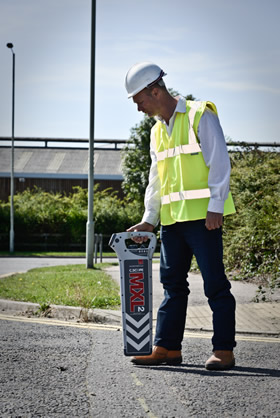Cable and pipe locator technology presents a solution to critical considerations surrounding the construction industry, ensuring underground utilities are successfully mapped and avoided throughout earthmoving projects. A multitude of vital utilities are currently located underground including gas lines, telephone lines, and water pipers – all of which must be identified before excavation or construction can commence.
The process of cable and pipe location itself, revolves the accurate detection and mapping of underground utilities, involving highly technical pipe and cable locating tools. Though services and equipment both come at an additional cost, risking damage to existing underground infrastructure is much more costly than simply managing safe excavation practices.
Understanding how utility locating works and the technology behind cable and pipe locator technology is often the first step toward the implementation of successful construction and earthmoving processes. It is also important to note that while locating tools are often manufactured with the same intention, they can still restricted with certain capabilities meaning different circumstances may require alternate location services.
So, what does the process utility location entail and which technologies are driving this vital aspect of the construction industry?
 Behind the scenes of pipe and cable locator technology
Behind the scenes of pipe and cable locator technologyCable and pipe location technology has been advancing for years now, however, many still believe they can avoid locating processes in favour of alternate excavation methods. While options such as hydro excavation is known to have a lesser impact, utility mapping is still vital before a project commences.
In terms of the ‘behind the scenes’ technology driving this equipment, there are two primary variants which both yield various advantages over one another. When looking at investing in utility locating services, the two technologies likely to be utilised are EMI and GRP-based tools.
When looking to invest into cable and pipe location technology, core detection principles should be analysed in order to better understand which products or methods are optimal for your worksite. Generally speaking, passive and active location methodologies underpin utility detection service approaches.
Passive locating is a common detection method used by contractors to check construction sites for unknown lines, cables, and pipes. During this process, the area is swept with the receiver in order to locate underlying utilities which radiate frequencies. Although effective when searching blindly for signals, the operator is unable to distinguish between utility types, increasing uncertainty around where to start.
Active location simply refers to the perusal of specific utility types or configurations using either direct connection or induction methodologies. During this process, locators can be attached directly to the line, alternatively using selected frequencies to locate reradiating utilities.
Evidently, underground utility locating is an extremely valuable asset in terms of both a preventive safety measure and long-term investment option, however, when is cable and pipe locator technology actually required? Well, essentially always…
Utility locating reduces the chance of causing lasting damage to public infrastructure assets which often results in significant losses and a potential harm to local communities. Safety is always a fundamental step throughout all earthmoving and excavation projects, meaning locating equipment acts as a valuable piece of insurance against harmful disruptions to essential Australian commodities.
The question rather remains which utility locating technology to purchase or take advantage of, compared to whether this equipment is actually required. Gaining access to high quality products can prove to be a worthy long-term purchase, providing an enticing return-on-investment over the period in which it is used. Alternatively, services can be outsourced and equipment can be hired in favour of short-term or one-off projects.

Kami membangun bisnis dengan memberikan solusi teknologi konstruksi untuk meningkatkan produktivitas pelanggan kami.
PT Aptella Solusi Teknologi
NPWP: 70.620.776.8.017.000
2024 Aptella | NPWP: 70.620.776.8.017.000 | Terms and Conditions | Privacy Policy